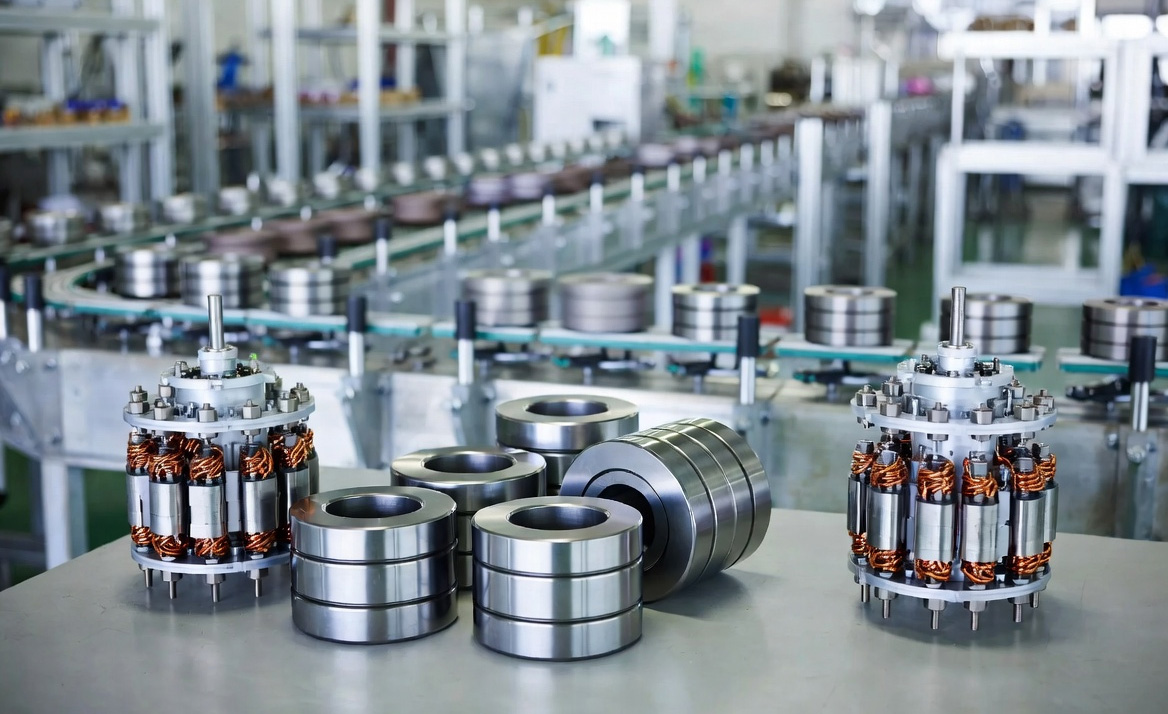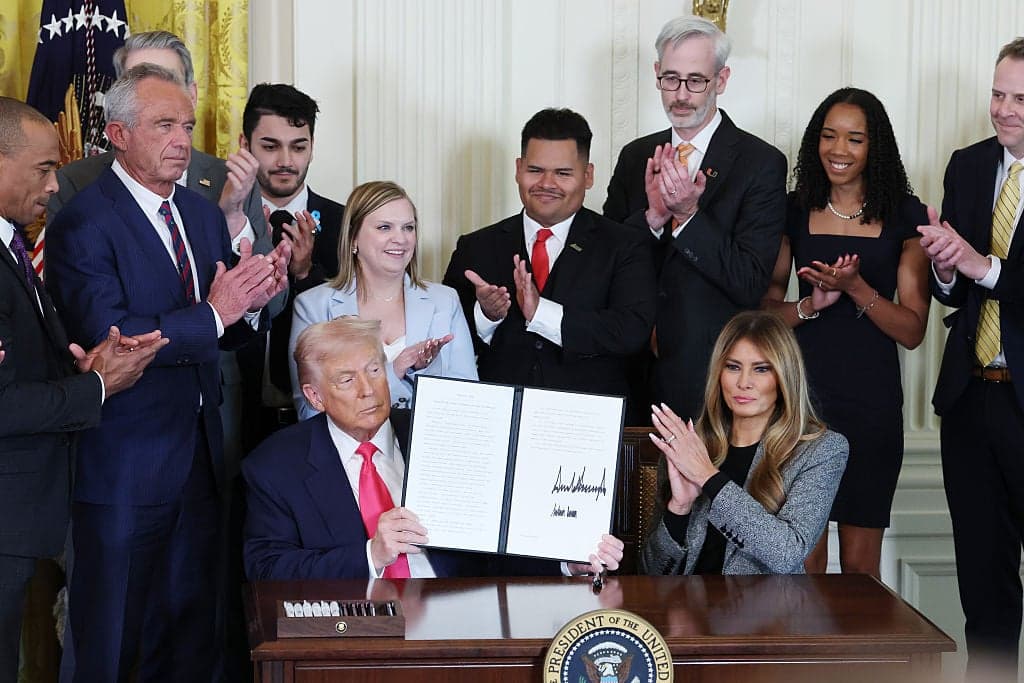Cabinet launches landmark Rare Earth Magnet scheme: Read how it will cut dependency on China and power India’s journey to ‘Atmanirbhar’ and ‘Viksit Bharat’
In a major step toward strengthening India’s technological capabilities, the Union Cabinet on Wednesday (26th November) approved a ₹7,280-crore scheme to promote the domestic production of sintered Rare Earth Permanent Magnets (REPMs). This is the first scheme of its kind in the country and is being seen as a big milestone for India’s technology and manufacturing ecosystem. The meeting, chaired by Prime Minister Narendra Modi, cleared the proposal intending to build a strong home-grown supply chain for magnets that are used in electric vehicles, renewable energy equipment, aerospace systems, defence technology and even medical machinery. A historic first for India’s high-tech manufacturing!The Union Cabinet has approved a scheme to establish India's first integrated ecosystem for manufacturing Sintered Rare Earth Permanent Magnets (REPM), which are essential components in electric vehicles, wind turbines,…— Narendra Modi (@narendramodi) November 26, 2025 Under the scheme, the government plans to set up 6,000 metric tonnes per annum (MTPA) of integrated REPM manufacturing capacity in India. The programme will be implemented over seven years, including two years for setting up the facilities. The government has earmarked ₹6,450 crore as sales-linked incentives over five years and ₹750 crore as capital subsidies. Five companies will be chosen through global bidding, with each getting approval for setting up to 1,200 MTPA capacity. The scheme aims to build a complete domestic chain that can convert NdPr oxide (neodymium–praseodymium) into high-performance NdFeB magnets, which are among the strongest permanent magnets in the world and cannot be easily replaced in high-performance applications. A mid-size electric car uses up to two kilograms of these magnets, and a large wind turbine can require hundreds of kilos. With India’s electric mobility and clean energy sectors growing rapidly, the need for these magnets is expected to shoot up in the coming years. PM Modi called the initiative “a historic first for India’s high-tech manufacturing,” as it will help the country reduce its dependence on imports, especially from China, which currently dominates global magnet production. Why this scheme matters for India The Rare Earth Permanent Magnet scheme is not just another manufacturing project; it holds major strategic importance for the country. India’s push toward clean energy, electric mobility and advanced electronics means the demand for rare earth magnets is set to grow many times over the next decade. Today, India imports most of its rare earth magnets and materials needed to produce them. China alone accounts for over 90% of refined magnet output globally and about 70% of rare earth mining. Full value creation within India will help reduce this dependency and insulate the country against supply disruption. The scheme will also contribute to India’s commitments under Net Zero 2070, as rare earth magnets play a crucial role in wind turbines, EV motors, and energy-efficient systems. A backbone for high-tech manufacturing includes rare-earth permanent magnets, and securing their production within India will go a long way in helping the country stay competitive on the global platform. According to the statement issued by the Union Cabinet, the scheme would help India become a major player in the global REPM market. It is expected to boost innovation, create jobs, push domestic research and strengthen India’s EV ecosystem. This also aligns with the government’s long-term goal of creating a technologically self-reliant India under the vision of Viksit Bharat @2047. India’s Rare Earth sources are mostly in the South Even though India has the world’s fifth-largest rare earth reserves, around 6.9 million tonnes, the country produces barely 1% of the global output. Most of India’s rare earth minerals are found in southern states, especially in coastal regions. Kerala is home to the richest monazite deposits, especially along the Kollam-Alappuzha-Kanyakumari belt. These areas have been historically mined by Indian Rare Earths Limited (IREL), with major plants operating in Chavara and Manavalakurichi. Monazite is a mineral rich in rare earth elements such as neodymium, cerium and lanthanum. It is commonly found in beach sands and river deposits. Odisha also has massive mineral sand reserves in districts like Ganjam, Balasore and Mayurbhanj, especially the Chatrapur belt, which contains large amounts of heavy minerals. Other important rare earth locations include coastal Srikakulam and Visakhapatnam in Andhra Pradesh, and the Krishna-Godavari region. In Tamil Nadu, districts like Tuticorin, Tirunelveli and Kanyakumari are key areas with valuable monazite-bearing sands. Although smaller occurrences exist in Rajasthan, Bihar and Jharkhand, the southern coastline remains the most viable source for rare earth extraction in India. Why is extracting Rare earth minerals



In a major step toward strengthening India’s technological capabilities, the Union Cabinet on Wednesday (26th November) approved a ₹7,280-crore scheme to promote the domestic production of sintered Rare Earth Permanent Magnets (REPMs). This is the first scheme of its kind in the country and is being seen as a big milestone for India’s technology and manufacturing ecosystem.
The meeting, chaired by Prime Minister Narendra Modi, cleared the proposal intending to build a strong home-grown supply chain for magnets that are used in electric vehicles, renewable energy equipment, aerospace systems, defence technology and even medical machinery.
A historic first for India’s high-tech manufacturing!
— Narendra Modi (@narendramodi) November 26, 2025
The Union Cabinet has approved a scheme to establish India's first integrated ecosystem for manufacturing Sintered Rare Earth Permanent Magnets (REPM), which are essential components in electric vehicles, wind turbines,…
Under the scheme, the government plans to set up 6,000 metric tonnes per annum (MTPA) of integrated REPM manufacturing capacity in India. The programme will be implemented over seven years, including two years for setting up the facilities. The government has earmarked ₹6,450 crore as sales-linked incentives over five years and ₹750 crore as capital subsidies. Five companies will be chosen through global bidding, with each getting approval for setting up to 1,200 MTPA capacity.
The scheme aims to build a complete domestic chain that can convert NdPr oxide (neodymium–praseodymium) into high-performance NdFeB magnets, which are among the strongest permanent magnets in the world and cannot be easily replaced in high-performance applications.
A mid-size electric car uses up to two kilograms of these magnets, and a large wind turbine can require hundreds of kilos. With India’s electric mobility and clean energy sectors growing rapidly, the need for these magnets is expected to shoot up in the coming years.
PM Modi called the initiative “a historic first for India’s high-tech manufacturing,” as it will help the country reduce its dependence on imports, especially from China, which currently dominates global magnet production.
Why this scheme matters for India
The Rare Earth Permanent Magnet scheme is not just another manufacturing project; it holds major strategic importance for the country. India’s push toward clean energy, electric mobility and advanced electronics means the demand for rare earth magnets is set to grow many times over the next decade.
Today, India imports most of its rare earth magnets and materials needed to produce them. China alone accounts for over 90% of refined magnet output globally and about 70% of rare earth mining.
Full value creation within India will help reduce this dependency and insulate the country against supply disruption. The scheme will also contribute to India’s commitments under Net Zero 2070, as rare earth magnets play a crucial role in wind turbines, EV motors, and energy-efficient systems.
A backbone for high-tech manufacturing includes rare-earth permanent magnets, and securing their production within India will go a long way in helping the country stay competitive on the global platform.
According to the statement issued by the Union Cabinet, the scheme would help India become a major player in the global REPM market. It is expected to boost innovation, create jobs, push domestic research and strengthen India’s EV ecosystem. This also aligns with the government’s long-term goal of creating a technologically self-reliant India under the vision of Viksit Bharat @2047.
India’s Rare Earth sources are mostly in the South
Even though India has the world’s fifth-largest rare earth reserves, around 6.9 million tonnes, the country produces barely 1% of the global output. Most of India’s rare earth minerals are found in southern states, especially in coastal regions.
Kerala is home to the richest monazite deposits, especially along the Kollam-Alappuzha-Kanyakumari belt. These areas have been historically mined by Indian Rare Earths Limited (IREL), with major plants operating in Chavara and Manavalakurichi. Monazite is a mineral rich in rare earth elements such as neodymium, cerium and lanthanum. It is commonly found in beach sands and river deposits.
Odisha also has massive mineral sand reserves in districts like Ganjam, Balasore and Mayurbhanj, especially the Chatrapur belt, which contains large amounts of heavy minerals. Other important rare earth locations include coastal Srikakulam and Visakhapatnam in Andhra Pradesh, and the Krishna-Godavari region. In Tamil Nadu, districts like Tuticorin, Tirunelveli and Kanyakumari are key areas with valuable monazite-bearing sands.
Although smaller occurrences exist in Rajasthan, Bihar and Jharkhand, the southern coastline remains the most viable source for rare earth extraction in India.
Why is extracting Rare earth minerals so difficult
Extraction of rare earth minerals is a long-drawn, expensive and highly regulated process. Essentially, the challenge is that monazite contains thorium and uranium, two radioactive elements, besides rare earth elements. That makes mining and processing of monazite come under the strict vigil of the Atomic Energy Regulatory Board (AERB).
Also, the separation of the rare earth elements is highly complicated. There are 17 different rare earth elements. Their isolation requires hundreds of steps involving solvent extraction. Large amounts of acids are consumed, and hazardous waste is generated in this process. According to some estimates, between 70 and 100 tonnes of toxic waste can be left behind with every tonne of rare earth oxide produced.
Because of these environmental and regulatory challenges, very few countries have been able to develop large-scale rare earth processing capabilities. China built its dominance over three decades by setting up massive processing facilities and accepting the environmental cost. India’s new scheme aims to build this capacity responsibly, under strict monitoring and modern technology.
The new programme will be jointly overseen by the Department of Atomic Energy, Ministry of Mines, and NITI Aayog, ensuring that extraction and processing meet global safety and environmental standards.
How this scheme pushes India toward ‘Atmanirbhar Bharat’ and ‘Viksit Bharat’
The Rare Earth Permanent Magnet scheme is a powerful example of how India is moving steadily toward self-reliance and long-term economic strength. For years, India relied heavily on imports for key technologies. With this scheme, India is taking control of a critical supply chain that powers industries of the future, electric mobility, renewable power, electronics, aerospace and defence.
Amitabh Kant, former CEO of NITI Aayog, said the scheme will help India break China’s monopoly over rare earths and set its own terms for technological growth. The ₹7,280-crore investment is expected to create a long-term ecosystem that supports everything from mining to magnet manufacturing.
By creating these capabilities within the country, India secures not only its future in industry but also advances towards the government’s dream of Viksit Bharat in 2047: a fully developed, high-income and technologically advanced nation. The scheme reinforces India’s strategic autonomy, reduces dependence on global supply chains and supports the nation’s clean energy and defence objectives.





































































